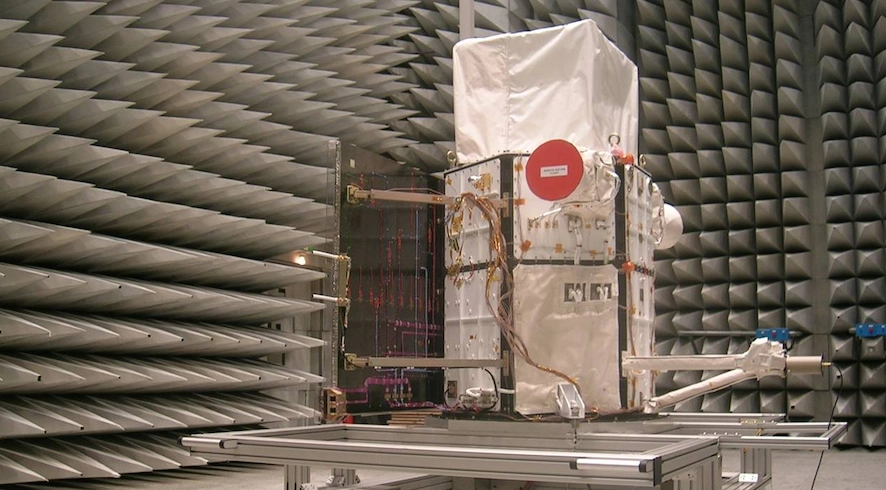 Last 14 February, after 17 years’ activity, the Italian Space Agency (ASI) scientific satellite AGILE (Astrorivelatore Gamma a Immagini Leggero) re-entered the atmosphere, thus ending its intense hunt for cosmic sources, that are among the most energetic in the universe, emitting gamma and X-rays. AGILE represented a unique, enormously successful space programme in the landscape of Italian space activities. AGILE was built by ASI in collaboration with INFN, INAF (the Italian National Institute for Astrophysics), Italian universities and industries, OHB Italia, Thales Alenia Space, Rheinmetall, and Telespazio. In more than 87,200 orbits around Earth, AGILE has monitored the sky at high energies, observing a vast variety of galactic and extragalactic gamma-ray sources, highlighting their very fast changes, frequent X- and gamma-ray emission episodes coming from neutron stars, remnants of supernovae explosions and black holes. The observations acquired from the satellite were received on Earth by the ASI Luigi Broglio Space Center station in Malindi, Kenya. The data were then retransmitted to the Telespazio control centre, before reaching the ASI Space Science Data Center (SSDC) in Rome, head of all data management, analysis, archiving, and distribution operations and those relating to catalogues accessible to the international scientific community.
Last 14 February, after 17 years’ activity, the Italian Space Agency (ASI) scientific satellite AGILE (Astrorivelatore Gamma a Immagini Leggero) re-entered the atmosphere, thus ending its intense hunt for cosmic sources, that are among the most energetic in the universe, emitting gamma and X-rays. AGILE represented a unique, enormously successful space programme in the landscape of Italian space activities. AGILE was built by ASI in collaboration with INFN, INAF (the Italian National Institute for Astrophysics), Italian universities and industries, OHB Italia, Thales Alenia Space, Rheinmetall, and Telespazio. In more than 87,200 orbits around Earth, AGILE has monitored the sky at high energies, observing a vast variety of galactic and extragalactic gamma-ray sources, highlighting their very fast changes, frequent X- and gamma-ray emission episodes coming from neutron stars, remnants of supernovae explosions and black holes. The observations acquired from the satellite were received on Earth by the ASI Luigi Broglio Space Center station in Malindi, Kenya. The data were then retransmitted to the Telespazio control centre, before reaching the ASI Space Science Data Center (SSDC) in Rome, head of all data management, analysis, archiving, and distribution operations and those relating to catalogues accessible to the international scientific community.
INFN has contributed with the silicon-tungsten tracker of the Gamma Ray Imaging Detector, the heart of the main detector of AGILE. This was a pioneer in using “silicons” in space for high-energy gamma astrophysics, later adopted by the Large Area Telescope of the NASA Fermi mission too.
The scientific production of AGILE consists of more than 800 bibliographical references, including more than 160 peer-reviewed articles and 12 mission catalogues published up until January 2024. The main scientific discoveries of AGILE include the first identification of the galactic cosmic ray sources in supernovae remnants, the evidence of extremely fast particle acceleration of the Crab Nebula with a rapidly rotating pulsar at the centre (2012 Bruno Rossi Prize), and the identification of gamma-ray emission at the emission of relativistic jets from the galactic Cygnus X-3 binary system with a black hole. Moreover, AGILE has provided a very detailed map of the whole galaxy and studied hundreds of galactic and extragalactic sources.
During its operations, AGILE also detected thousands of transient events of cosmic origin, like Gamma Ray Bursts (GRB), events connected with neutrinos and Fast Radio Bursts (FRB), solar flares, as well as events of terrestrial origin like the Terrestrial Gamma-ray Flashes (TGF). AGILE has contributed with a front-line role to research possible counterparties of gravitational wave sources. AGILE’s follow-up observations have actually provided the fastest response and the most significant upper limits above 100 MeV of the gravitational wave events detected up until today by the LIGO and Virgo interferometers. AGILE was a very successful mission, a small satellite that produced great science.




